ASUS RS500A-E9-RS4-U Performance
As mentioned earlier in this article, we swapped processors from throughout the AMD EPYC 7001 range. AMD has many SKUs in their range capable of single-socket only operation, so we picked a few samples to show how incrementing CPU levels impacts performance. Running through our standard test suite generated over 1000 data points for each set of CPUs. We are cherry-picking a few data points to give some sense of CPU scaling with each solution.
Python Linux 4.4.2 Kernel Compile Benchmark
This is one of the most requested benchmarks for STH over the past few years. The task was simple, we have a standard configuration file, the Linux 4.4.2 kernel from kernel.org, and make the standard auto-generated configuration utilizing every thread in the system. We are expressing results in terms of compiles per hour to make the results easier to read.
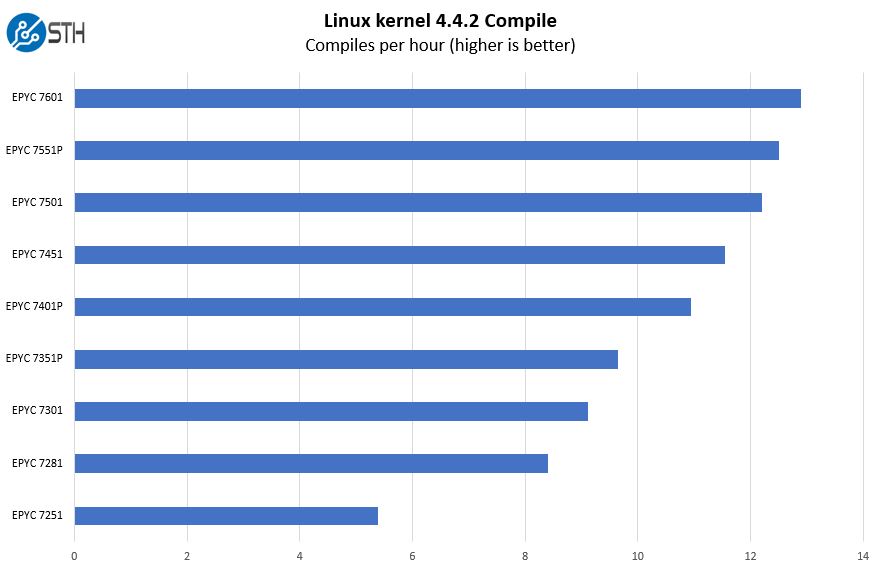
If you see the “P” series parts those are certainly special in the AMD range. They are AMD’s single-socket only CPUs designed for systems like this ASUS RS500A-E9-RS4-U server. At this point in the product cycle we have deployed the AMD EPYC 7401P the most in our own clusters, and strongly suggest using the EPYC 7351P, EPYC 7401P, or EPYC 7551P. These CPUs represent an awesome value.
c-ray 1.1 Performance
We have been using c-ray for our performance testing for years now. It is a ray tracing benchmark that is extremely popular to show differences in processors under multi-threaded workloads. We are going to use our new Linux-Bench2 8K render to show differences.
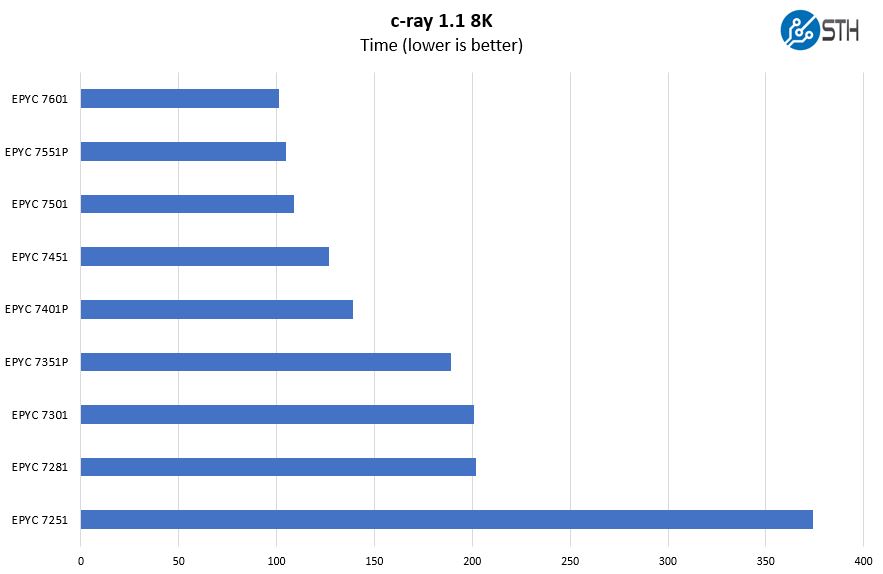
Here, we have a good illustration of the step function in the line. You can see that the AMD EPYC series has such large deltas in core counts between 8, 16, 24, and 32 cores that the performance changes dramatically with core count. In an ASUS RS500A-E9-RS4-U this is why we generally say that the biggest differences are with moving up the core count stack in the P range for single-socket servers.
7-zip Compression Performance
7-zip is a widely used compression/ decompression program that works cross-platform. We started using the program during our early days with Windows testing. It is now part of Linux-Bench.
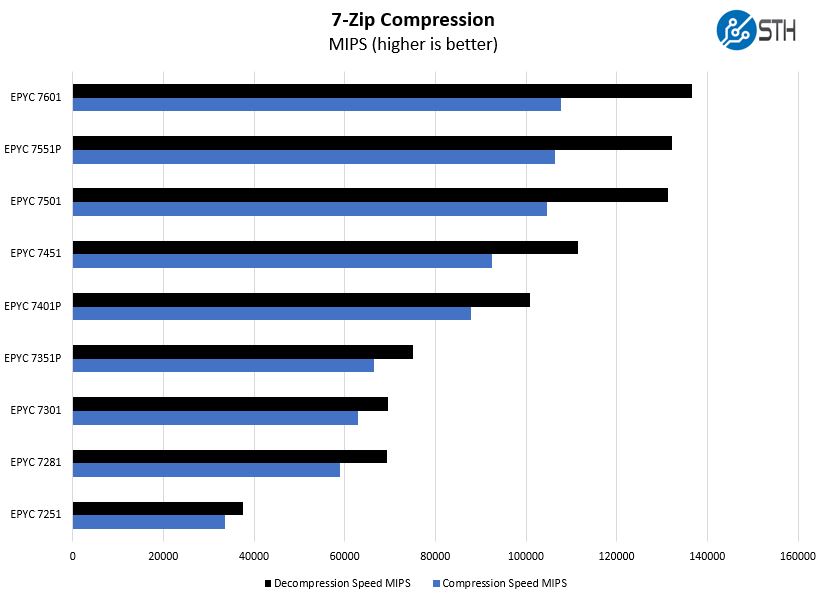
Again, on the compression side, we can see the ASUS RS500A-E9-RS4-U options line up well. The AMD EPYC 7251 may be less expensive, but it is a hard option to pick versus the AMD EPYC 7351P for a 1P platform like this.
OpenSSL Performance
OpenSSL is widely used to secure communications between servers. This is an important protocol in many server stacks. We first look at our sign tests:
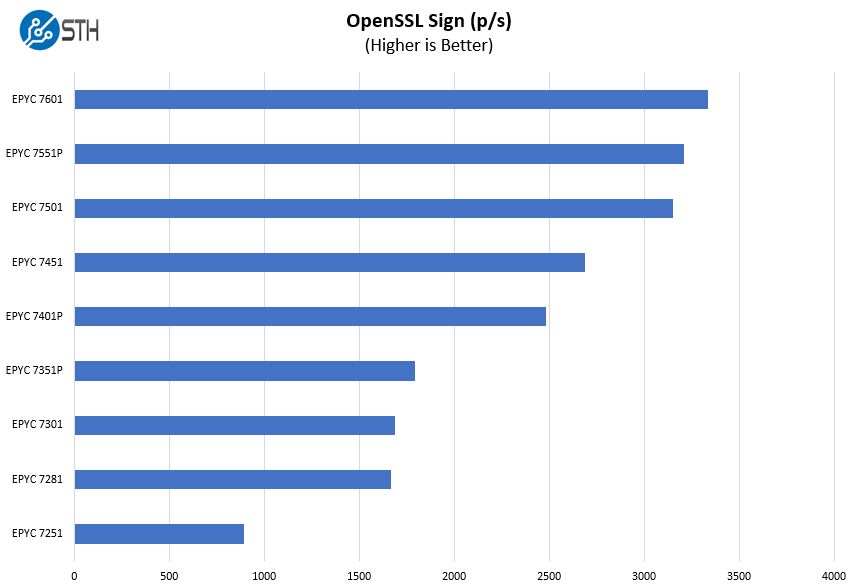
Here are the verify results:
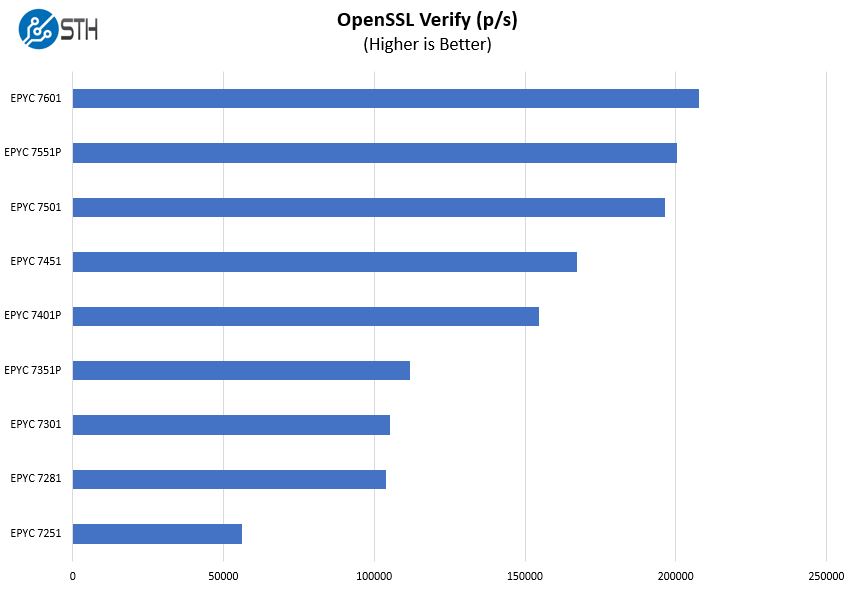
OpenSSL is going to be used by many customers of the ASUS RS500A-E9-RS4-U.
You can read some of our individual CPU reviews to get more information on the different options. We suggest the following three:
- AMD EPYC 7401P Linux Benchmarks and Review – Something Special
- AMD EPYC 7351P Single Socket CPU Linux Benchmarks and Review
- AMD EPYC 7551P Benchmarks and Review A 32 Core Value Monster
If those do not meet your needs, then we have other review pieces.
Chess Benchmarking
Chess is an interesting use case since it has almost unlimited complexity. Over the years, we have received a number of requests to bring back chess benchmarking. We have been profiling systems and are ready to start sharing results:
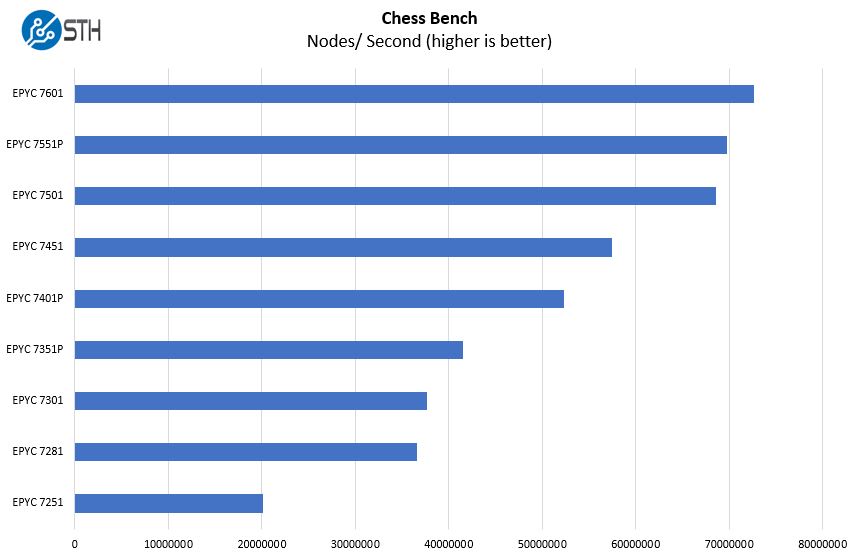
There is some pricing variation and speed variation between the different SKUs. Still, when the frequency variations are relatively small, and there are eight cores between steps, the question then turns to price. With the AMD EPYC “P” series SKUs, the pricing is such that one can get eight additional cores or more for the same price. We have been harping on that, but that is what servers like the ASUS RS500A-E9-RS4-U are made to take advantage of.
Next, we are going to look at the power consumption before getting to our final thoughts.




I have an RS500a-E10-RS12 in front of me right now (the 12x SFF model of the same system, while the RS4 above is the 4x LFF model). Asus’s website and docs aren’t exactly clear on the differences between the two models, other than (obviously) using different drive sizes. The only real difference I saw in the spec sheet was a mention that you could only use LP cards in the RS12.
That’s not actually strictly accurate. The right x16 riser comes occupied with a 2x oculink card, connected to the 11th and 12th NVMe bays. There’s also a 3rd “riser” in the system, in the far left motherboard x16 slot. Instead of a PCIe slot, the riser has 4x oculink ports. Mechanically, this means that you can’t use *full*-height cards in the middle x16 riser, but you still have to use a full-height bracket. The card can be a bit taller than LP, though; the limit is around 1/2″ shorter than the FH bracket.
So, on the RS12, you have room for 1 x16 PCIe 4.0 card and 1 x16 OCP 2.0 PCIe 4.0 card, down one slot from the RS4. I had a spare 2x 10GbE OCP card on hand; it fits under the 2x oculink card but there isn’t a ton of clearance.
Thanks for sharing! It would be interesting to see a review of the RS500A-E10-RS12U model, too!